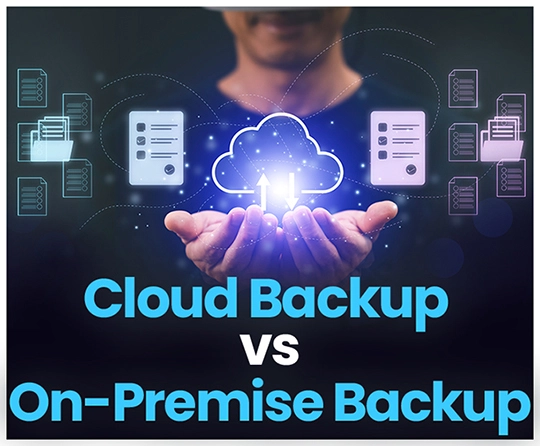Cloud backup and on-premise backup are two different methods of data backup. We are here to explain what is the difference between cloud backup and on-premise backup and its pro and cons to let you deploy right backup solutions.
-
On-premise backup
On-premise backup refers to backing up data using local storage devices such as hard disks, tape drives, or network-attached storage (NAS) devices that are located on-site. This type of backup is typically managed by an organization's IT department and provides full control over the backup and storage process.
-
Cloud backup
Cloud backup, on the other hand, refers to backing up data to a remote cloud-based storage service such as Amazon S3, Google Cloud Storage, or Microsoft Azure. This type of backup is managed by a third-party provider, and the data is stored off-site in a secure data center.
-
What are the key differences on backup control?
One of the key differences between these two backup methods is the level of control and management. With on-premise backup, the organization has full control over the backup process and can customize the backup parameters to meet specific needs. However, this also means that the organization is responsible for maintaining the backup hardware and ensuring that backups are performed regularly.
With cloud backup, the provider manages the backup process, including hardware maintenance and software updates. This allows organizations to focus on other aspects of their business rather than worrying about backup management. However, this also means that organizations outsource backup process to trustworthy providers which ensure that backups are performed properly and securely.
-
What is the difference on cost?
Another significant difference is the cost. On-premise backup requires an upfront investment in hardware and software, as well as ongoing maintenance costs. Cloud backup, on the other hand, is typically a pay-as-you-go model, with costs based on the amount of data being stored and the level of service required.
In summary, on-premise backup provides the organization with full control over the backup process but requires significant upfront and ongoing costs. Cloud backup, managed by a third-party provider, requires less upfront investment and provides a more scalable and flexible solution. However, organizations outsource backup process and find the trustworthy provider for security and compliance.
I hope this helps clarify the differences between cloud backup and on-premise backup. Let me know if you have any further questions or if there's anything else I can help you with! CloudBacko is an expert on cloud and on-premise backups. Download free trial.
